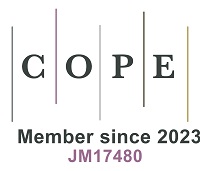REFERENCES
1. Zhang, M.; Zhang, Z.; Tong, B.; Ren, B.; Zhang, L.; Lin, X. Analysis of the coupling characteristics of land transfer and carbon emissions and its influencing factors: a case study of China. Front. Environ. Sci. 2023, 10, 1105552.
2. Chong, C. H.; Gao, Y.; Ma, L.; et al. A supply chain allocation method for environmental responsibility based on fossil energy as the anchor for carbon responsibility. J. Clean. Prod. 2023, 416, 137904.
3. Caro, F.; Corbett, C. J.; Tan, T.; Zuidwijk, R. Carbon-optimal and carbon-neutral supply chains. 2011. Available from: https://ssrn.com/abstract=1947343 [Last accessed on 6 Mar 2025].
4. Chen, J. X.; Chen, J. Supply chain carbon footprinting and responsibility allocation under emission regulations. J. Environ. Manag. 2017, 188, 255-67.
5. Kanakoudis, V.; Papadopoulou, A. Allocating the cost of the carbon footprint produced along a supply chain, among the stakeholders involved. J. Water. Clim. Chang. 2014, 5, 556-68.
6. Lin, B.; Guan, C. Assessing consumption-based carbon footprint of China’s food industry in global supply chain. Sustain. Prod. Consump. 2023, 35, 365-75.
7. Al-Buenain, A.; Al-Muhannadi, S.; Falamarzi, M.; Kutty, A. A.; Kucukvar, M.; Onat, N. C. The adoption of electric vehicles in Qatar can contribute to net carbon emission reduction but requires strong government incentives. Vehicles 2021, 3, 618-35.
8. Cao, J.; Chen, X.; Qiu, R.; Hou, S. Electric vehicle industry sustainable development with a stakeholder engagement system. Technol. Soc. 2021, 67, 101771.
9. Hofmann, J.; Guan, D.; Chalvatzis, K.; Huo, H. Assessment of electrical vehicles as a successful driver for reducing CO2 emissions in China. Appl. Energy. 2016, 184, 995-1003.
10. Liu, D.; Xiao, B. Exploring the development of electric vehicles under policy incentives: a scenario-based system dynamics model. Energy. Policy. 2018, 120, 8-23.
11. Abdul Qadir, S.; Ahmad, F.; Mohsin A B Al-Wahedi, A.; Iqbal, A.; Ali, A. Navigating the complex realities of electric vehicle adoption: a comprehensive study of government strategies, policies, and incentives. Energy. Strategy. Rev. 2024, 53, 101379.
12. Sajid, J.; Sajid, M. B.; Ahmad, M. M.; et al. Energetic, economic, and greenhouse gas emissions assessment of biomass and solar photovoltaic systems for an industrial facility. Energy. Rep. 2022, 8, 12503-21.
13. Zhou, Y.; Wang, M.; Hao, H.; Johnson, L.; Wang, H.; Hao, H. Plug-in electric vehicle market penetration and incentives: a global review. Mitig. Adapt. Strategy. Glob. Chang. 2015, 20, 777-95.
14. Wen, D.; Gao, W.; Qian, F.; Gu, Q.; Ren, J. Development of solar photovoltaic industry and market in China, Germany, Japan and the United States of America using incentive policies. Energy. Explor. Exploit. 2021, 39, 1429-56.
15. Guo, H.; Dong, M.; Tsinopoulos, C.; Xu, M. The influential capacity of carbon neutrality environmental orientation in modulating stakeholder engagement toward green manufacturing. Corp. Soc. Resp. Environ. Manag. 2024, 31, 292-310.
16. Dall-Orsoletta, A.; Ferreira, P.; Gilson, D. G. Low-carbon technologies and just energy transition: prospects for electric vehicles. Energy. Convers. Manag. X. 2022, 16, 100271.
17. Wang, Q. H.; Shi, C. How does the new EU battery regulation affect China’s new energy vehicle and battery companies to go global. 2023. Available from: https://www.allbrightlaw.com/CN/10475/6a791f2891c23615.aspx# [Last accessed on 6 Mar 2025].
18. Günther, H.; Kannegiesser, M.; Autenrieb, N. The role of electric vehicles for supply chain sustainability in the automotive industry. J. Clean. Prod. 2015, 90, 220-33.
19. Lu, Q. X. New energy vehicles seek to integrate with renewable energy. China Energy News. 2021. Available from: http://paper.people.com.cn/zgnyb/html/2021-01/25/content_2031213.htm [Last accessed on 6 Mar 2025].
20. Yao, M. J. Power battery industry chain accelerates zero-carbon transition. China Energy News. 2022. Available from: http://paper.people.com.cn/zgnyb/html/2022-12/05/content_25953654.htm [Last accessed on 6 Mar 2025].
21. Zhang, Y.; Jiang, Y.; Hu, S.; Yan, D. New approach for carbon emission responsibility allocation with product benchmark. China. Popul. Resour. Environ. 2020, 30, 43-53.
22. Gao, Y.; Liu, G.; Meng, F.; Hao, Y.; Chen, C.; Casazza, M. A carbon responsibility allocation approach with incentives mechanism based on carbon emissions and carbon offsets accounting. J. Clean. Prod. 2024, 434, 139814.
23. Cordier, M.; Poitelon, T.; Hecq, W. The shared environmental responsibility principle: new developments applied to the case of marine ecosystems. Econ. Syst. Res. 2019, 31, 228-47.
24. Lenzen, M.; Murray, J.; Sack, F.; Wiedmann, T. Shared producer and consumer responsibility-theory and practice. Ecol. Econ. 2007, 61, 27-42.
25. China’s National Bureau of Statistics. Input-output table 2020. Available from: https://data.stats.gov.cn/ifnormal.htm?u=/files/html/quickSearch/trcc/trcc01.html&h=740 [Last accessed on 6 Mar 2025].
26. Polaris Energy Storage Network. 2022 power battery data ranking announced! Cumulative output 545.9 GWh, an increase of 148.5%. 2023. Available from: https://m.bjx.com.cn/mnews/20230113/1282866.shtml [Last accessed on 6 Mar 2025].
27. Lu, Q. X. Core technology, industrial scale, cost, and price have first-mover advantages, and carbon emission management capabilities need to be strengthened: the power battery industry needs to accelerate the promotion of carbon competitiveness. 2023. Available from: http://paper.people.com.cn/zgnyb/html/2023-06/19/content_26000702.htm [Last accessed on 6 Mar 2025].
28. China Business Information Network. Analysis of power battery production in 2020: a cumulative 83.4 GWh from January to December, down 2.3% year-on-year. 2021. Available from: https://www.askci.com/news/chanye/20210125/0958051339433.shtml [Last accessed on 6 Mar 2025].
29. Tesla 2020 Impact Report. Available from: https://www.tesla.com/ns_videos/2020-tesla-impact-report.pdf [Last accessed on 6 Mar 2025].
30. Tesla 2021 Impact Report. Available from: https://www.tesla.com/ns_videos/2021-tesla-impact-report.pdf [Last accessed on 6 Mar 2025].
31. Wang, F. Y. How do lithium companies deal with “carbon barriers”? The UN report gives guidance. 2023. Available from: https://new.qq.com/rain/a/20231120A09DGW00# [Last accessed on 6 Mar 2025].








